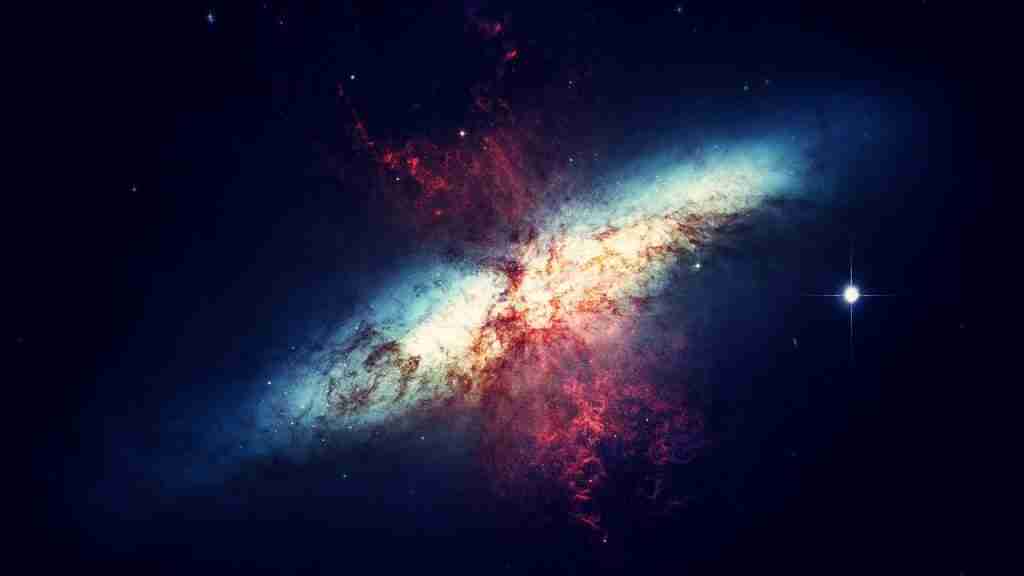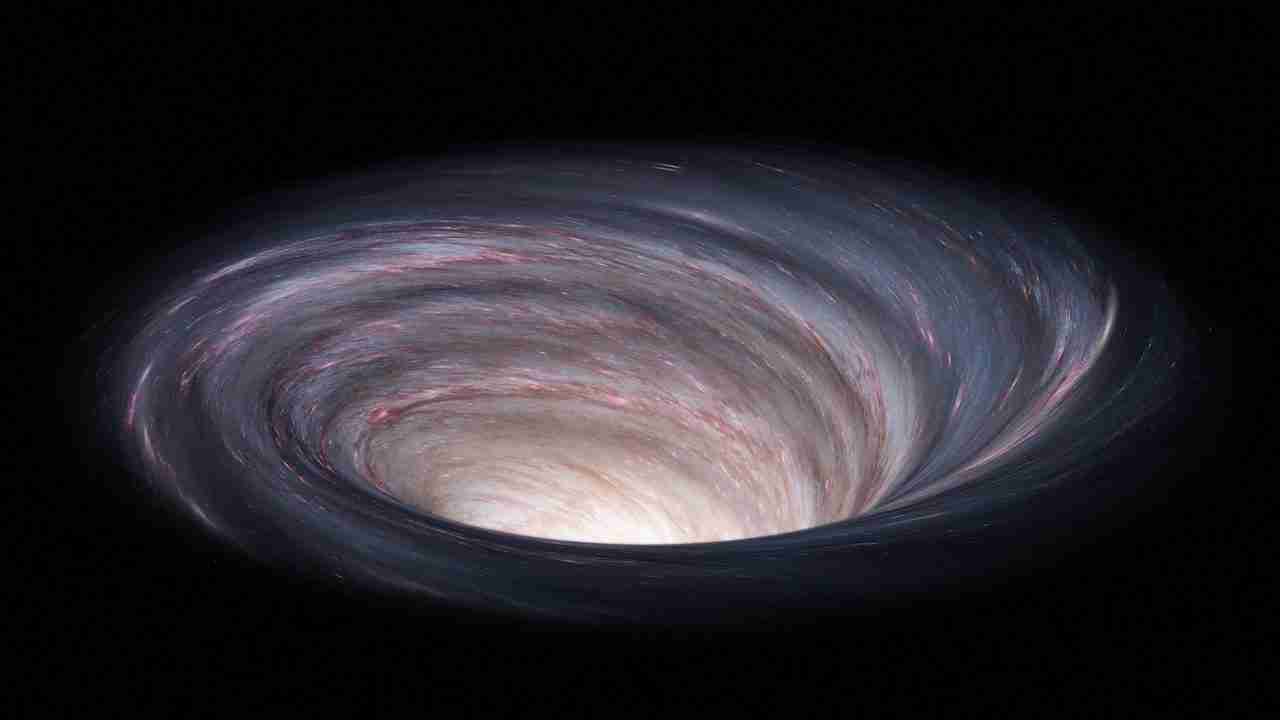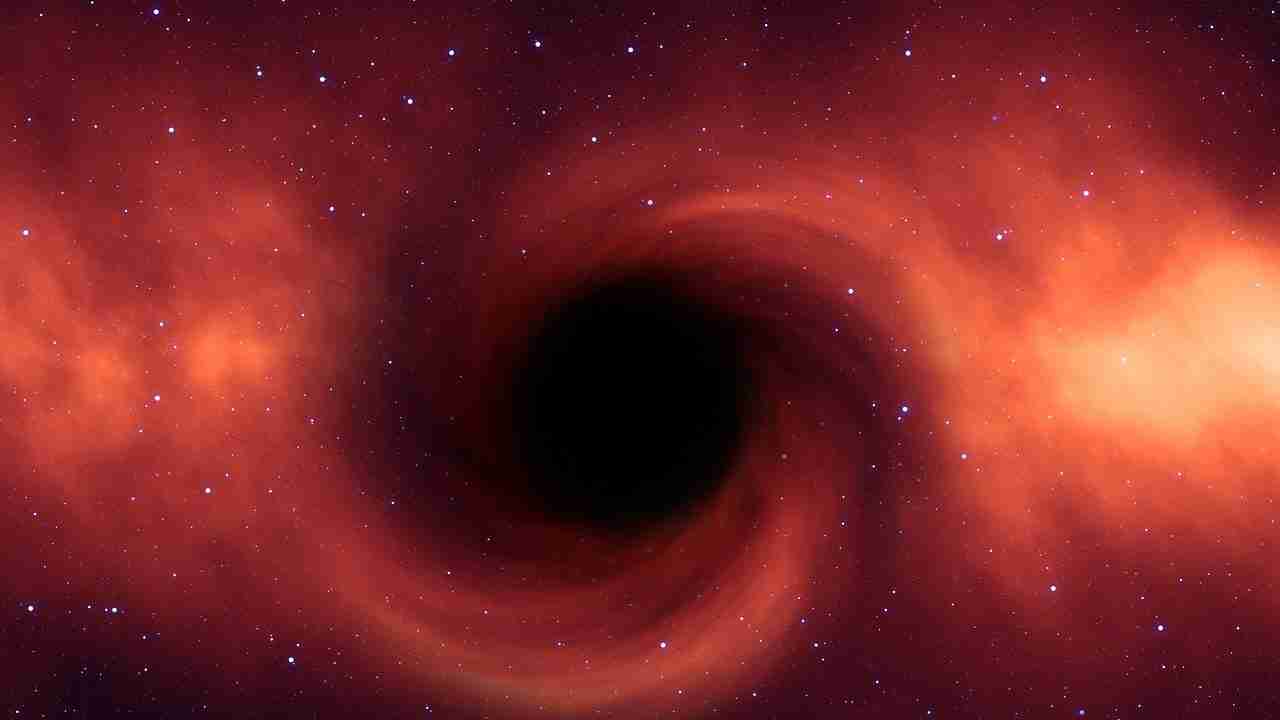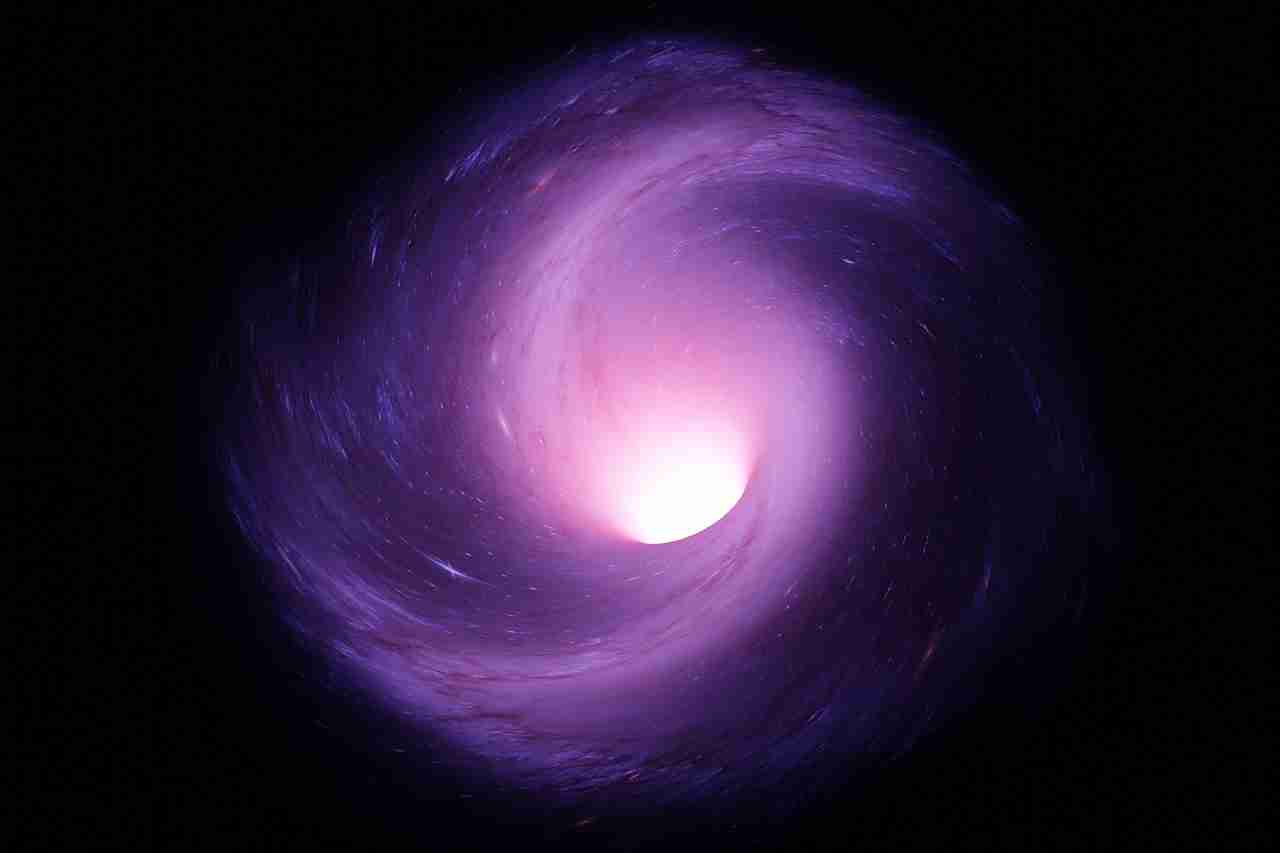22 Interesting Facts About Black Holes You Never Knew
1. Black holes are regions of space where the gravitational force is so strong that nothing can escape from it, not even light.
Black holes are truly the stuff of science fiction, disrupting our most traditional ideas about what happens in space. The gravity of these hidden objects is so intense that even light cannot escape its pull.
Nothing, no matter how large or small, will get past once it has crossed the black hole’s event horizon and entered its vicinity.
In short, black holes act as invisible gatekeepers in the universe and act as perimeters for many galaxies across the universe, blocking one area from another beyond all comprehension!
2. The gravitational pull of a black hole is so strong that it can bend light and distort space-time.
Black holes are wondrous astronomical phenomena, capable of extreme gravitational pull that can affect the very fabric of space itself. This pull is so powerful that light is actually bent in its presence.
Not only is it bending, but it is also distorting the space around it in incredible ways, warping time and space in radical ways. There are stories of matter being sucked into it, swallowed up by the all-consuming gravity with no hope for escape.
Even seeing these objects is difficult because their radiation is so powerful that light bends in an attempt to escape their gravitational field.
3. There are three main types of black holes: small, medium, and supermassive.
Black holes come in all shapes and sizes. One classification breaks them into three categories: small, medium, and supermassive. Small black holes can form in a fairly rapid process that generates an astronomical amount of energy.
Medium-sized black holes are believed to occur most often when an enormous star supernova. Supermassive black holes sprawl out throughout the galaxy, and we know they house some truly incredible phenomena within their crushing gravity.
4. Small black holes are the smallest type, with masses similar to that of a mountain.

Small black holes, also known as primordial black holes, are the tiniest type of black hole. They have a range of mass, usually from that of an atom to that of a mountain range, ruling out their classification as quasars or supermassive black holes.
Nevertheless, these practically invisible primordial black holes have remained elusive until now. In order to identify the energy radiation that surrounds them, scientists investigate it.
5. Medium-sized black holes, also known as stellar black holes.
Medium-sized black holes, called stellar black holes, have capacities that are greater than the sun. These influential objects possess several times the mass of our local star.
In astronomical circles, this unique celestial phenomenon is studied extensively because of its ability to defy typical laws of gravity and physics and command respect.
Few celestial events in nature emerge with energies as strong as those of a black hole, giving diligent researchers much to study.
6. Supermassive black holes are the largest type, with masses that are millions or billions of times larger than the sun.
Supermassive black holes are truly colossal, dwarfing all other astronomical bodies with their incredible size. To illustrate just how massive they are, they can reach weights that are millions or even billions of times greater than those of our very reliable and consistent sun.
That’s right—supermassive black holes tremendously outshine our dependable solar friend in mass!
7. The first black hole to be discovered was Cygnus X-1, which was found in 1964.
The discovery of the first black hole was announced in 1964! This remarkable space object, known as Cygnus X-1, caused quite a stir in the astronomical community.
Opening new doors to space exploration, the term “black hole” began to be understood keenly in various scientific fields.
Discovering Cygnus X-1, one of the most fascinating black holes known to date, enabled scientists to expand their knowledge and understanding related to this powerful phenomenon. Interesting Facts About Black Holes, discovered through studying Cygnus X-1, have sparked theories that would continue to generate further investigation across the decades.
8. Black holes can be found at the center of most galaxies, including our own Milky Way.
Astronomers have been intrigued by black holes for well over a century. For decades, they thought black holes were mere theories, yet undeniable evidence of their existence has been discovered.
These mysteries can be found at the very cores of galaxies, including the Milky Way, in which our own planet sits.
Many astronomers agree that cosmic bodies are greatly affected by the gravitational pull from these mysterious forces, making it an impossibility to ignore them.
9. Black holes are thought to be formed when a star collapses at the end of its life cycle.

Black holes are mysterious phenomena found in the depths of outer space. They are thought to form when a star eventually dies as it reaches the end of its life cycle.
As the enormous energy and material compress, the force creates a gravitational field so powerful that not even light can escape from its trap.
This collapse produces an incredibly dense point in time and space, commonly referred to as a “singularity,” better known as a “black hole.”
10. Some black holes spin rapidly, while others do not.
Rotation speed is one of the most fascinating characteristics of black holes. “Interesting Facts About Black Holes” reveal that some have a very rapid spin, turning so quickly that not even light can escape their pull. But, others turn slower than usual, owing to their mass and motion type.
Scientists often analyze the movement of these phenomena to gain insight into their properties and the way they affect the universe around them.
Each black hole is unique in its own right, with various attributes that human beings seek to understand.
11. Black holes can be observed through their effects on nearby objects, such as stars and gas.
Black holes are phenomena that can be observed from a distance, even though they stay hidden from our eyes. But their effects can be detected as they have a powerful pull on each and every object near them.
This often includes stars and various gases present in their vicinity. Taking advantage of this, astronomers can perceive the chaotic gravitational mix created by the immense gravity of black holes!
12. The event horizon of a black hole is the boundary around the black hole beyond which nothing can escape.
Have you ever wondered what the boundary would be for one of the most powerful forces in nature? That boundary actually has a name: the event horizon of a black hole.
Beyond this boundary, nothing can escape the immense gravitational force of a black hole. Even light around which these entities revolve can’t penetrate its powerfully influential embrace, thus giving it its nickname, “the point of no return.”
13. The Schwarzschild radius of a black hole is the distance from the center of the black hole at which the escape velocity exceeds the speed of light.
Have you ever wondered what lies beyond the edges of our universe? Well, some experts think they may have found the answer in black holes.
The mysterious forces of these unusual cosmic objects calculate an important figure that experts refer to as its “Schwarzschild radius,” which defines how far away its gravitational effects extend outward.
To be precise, it is the very distance from the center of the black hole at which its escape velocity suddenly exceeds that of light itself!
14. If a person were to fall into a black hole, they would experience intense gravitational forces .
If a person were to venture too close to a black hole, they would encounter some Interesting Facts About Black Holes. An unexplainable pull of gravity would create unexpected and hazardous consequences. An incredibly intense force, much greater than any earthly experience, causes moving objects, such as unlucky travelers, to be dynamically distorted.
Unfortunate victims of this experience are literally stretched into long, thin tubular particles, giving it the unique name “spaghettification.”
All matter being pulled in and completely cut off from outside communication, unable to escape its grasp, eventually succumbs—forever.
15. It is thought that black holes may be connected to other parts of the universe through “wormholes.”
Some experts believe that black holes may serve as a gateway to other parts of the universe, like a door we can’t open ourselves.
This theory implies that these singularities could be traversed by a hypothetical type of path called a “wormhole.”
A wormhole is a theoretically predicted method that would allow fast movement through space and time without the relative time dilation effects seen with near-light speed travel.
16. Some scientists believe that black holes may be portals to other dimensions.
Researchers have theorized that black holes may offer access to alternative universes. Several scientists hypothesize that these cosmic vortices could be doorways to realms beyond estimation.
Another belief held by various researchers is that black holes possess the ability to span different planes of existence unknown to this realm.
Recent experiments have indicated that these mysterious portals may be responsible for opening passageways through multiple dimensions.
17. The term “black hole” was coined by physicist John Wheeler in 1967.

Physicist John Wheeler made a seemingly impossible discovery when he coined the term “black hole” in 1967. It is an astronomical phenomenon that fascinates scientists to this day and has spawned many theories and hypotheses.
The concept of a black hole is mesmerizing; “Interesting Facts About Black Holes” reveal that they are born of a collapse into their gravitational field, and they’re known as areas of immense gravity from which even light cannot escape.
Before John Wheeler’s groundbreaking work, astronomers did not understand the nature and function of these phenomena.
18. The first black hole to be imaged directly was the supermassive black hole at the center of the galaxy M87.
Astrophysicists have done the seemingly impossible task of imaging a black hole. For the first time ever, they were able to observe and record the momentous event at the vibrant core of the neighboring galaxy known as M87.
What lay at its center? None other than a supermassive black hole that traveled more than 55 million light-years to be observed with modern-day technology.
This groundbreaking discovery represented a drastic leap forward in scientific advancement, depicted before as complexities only charted by mathematical equations of gravity and mass.
19. The smallest black holes are thought to be about the size of an atom, while the largest black holes can be billions of times larger than the sun.
Black holes come in an impressive array of sizes. The smallest of these mysterious cosmic phenomena are thought to have diameters comparable to atoms, while the largest has been found to boast jaw-dropping expanses thousands — or even billions — of times greater than the size of our sun.
Such immense gravity wells challenge the limits of the physical world, drawing from them unimaginable powers and exotic energies.
20. Some black holes may be surrounded by a disk of material called an accretion disk.
Certain black holes may not exist alone—they can be framed by an accretion disk. This disk is made of numerous materials that are circling fast and whirl around the center.
Because the material has such speeds and produces so much energy, it is heated up to extremely high temperatures. Those excitable temperatures in a disc’s vicinity form a blanket safeguarding the neck of the hole.
The heat radiates outward, creating a luminous light bursting from everywhere that attracts more and more particles making up greater masses of material.
21. The intense gravitational forces of a black hole can cause the time to slow down for objects near the event horizon.
The gravitational forces of a black hole can be immense, their powerful energy so great that it affects the flow of time! Interesting Facts About Black Holes Objects that find themselves near the event horizon – the outermost rim around the depths of a black hole – can experience an alteration in the way time passes for them.
To understand this phenomenon more clearly, we must consider how difficult it is to escape from a massive black hole’s gravitational pull. As an object approaches closer to the edge of the horizon, its movement slows dramatically as space below that line gets pulled in by such strong gravity.
Therefore time slows down for those processions near a black hole’s event horizon.
22. Some scientists believe that black holes may be responsible for the formation of galaxies.
A number of astronomers and astrophysicists throughout the world subscribe to the theory that black holes are responsible for the beginning of galactic formation.
In fact, their calculations show that generations of molecules colliding against one another around a black hole may create the same effect observed in galaxies as stars spinning around within solar systems.
Moreover, black holes can establish channels through which new gaseous matter can travel supplementing the process.







